前些日子,在谈到折叠屏以及未来手机形态的时候,我们提到了一种最新的设计方案 —— 卷轴屏。
卷轴屏的最大优势,是保持现有手机形态的情况下,不做折叠结构,也能实现更大的屏幕。
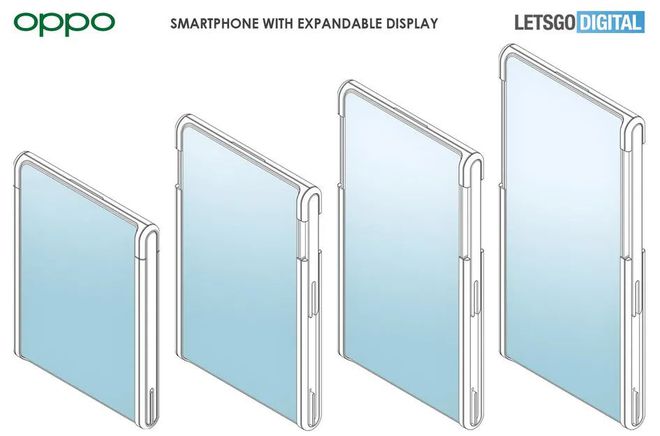 nload="this.removeAttribute('width'); this.removeAttribute('height'); this.removeAttribute('onload');" />
nload="this.removeAttribute('width'); this.removeAttribute('height'); this.removeAttribute('onload');" />
我是万万没想到。
几天后,这样的概念手机它就正式发布了。
OPPO X 2021
OPPO INNO Day 黑科技体验
先看手机 ——
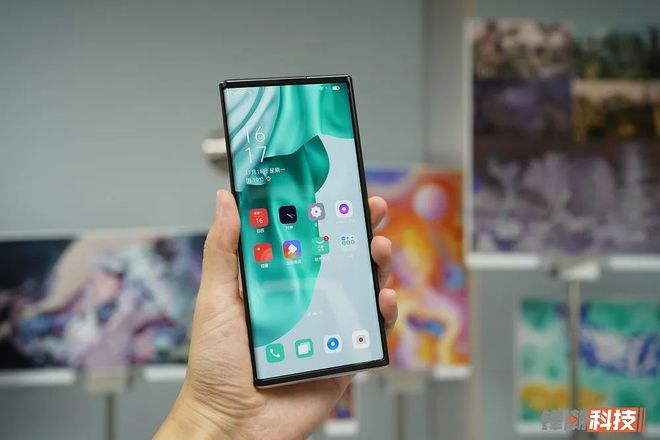 nload="this.removeAttribute('width'); this.removeAttribute('height'); this.removeAttribute('onload');" />
nload="this.removeAttribute('width'); this.removeAttribute('height'); this.removeAttribute('onload');" />
常规状态下,OPPO X 2021 屏幕尺寸是 6.4 英寸,和寻常手机差别不大。
曲面屏,左右两侧都有一定的弧度。
没有前置摄像头,是一款真全面屏设备。
它和目前的折叠屏不同,不需要通过折叠机构实现,所以整机厚度也会比较可观一些。
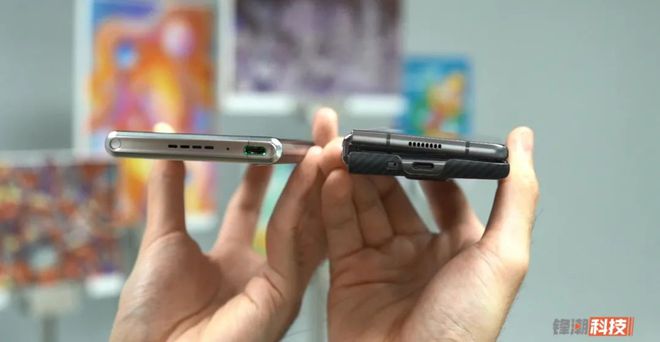 nload="this.removeAttribute('width'); this.removeAttribute('height'); this.removeAttribute('onload');" />
nload="this.removeAttribute('width'); this.removeAttribute('height'); this.removeAttribute('onload');" />
当然我知道大家想看的不是这个。
来,我要变身了!
只要这么轻轻抚摸一下 ——
屏幕一下子就能变大。
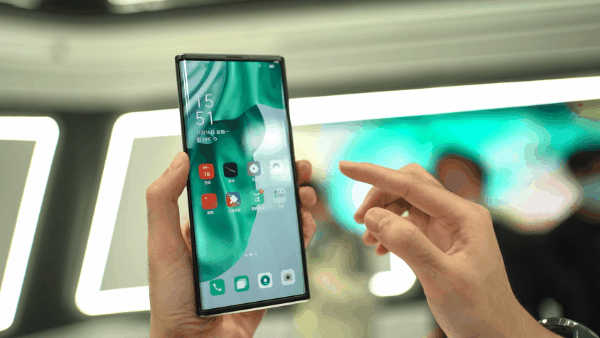
结合内部的两个电机,我们可以通过手势触发 OPPO X 2021 的卷轴机构。
通过伸缩,OPPO X 2021 的屏幕可以从 6.4 英寸,变成 7.3 英寸。
我们再从背面看一次 ——
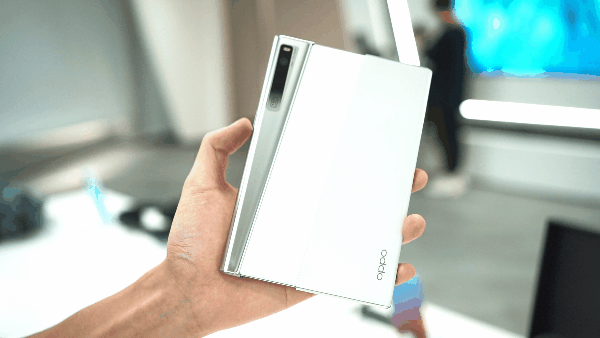
换个角度 ——
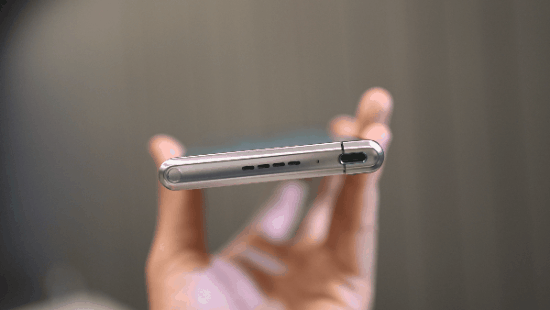
再换个角度 ——
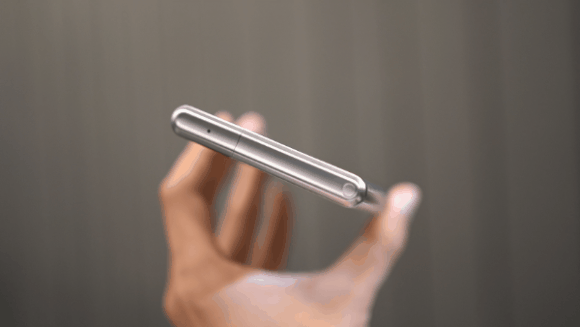
不知道大家看了有没有一种感觉 —— 这机子已经做得挺完善了呀?
不是开玩笑,拿到这款机子的时候,我都有点小震惊。
这完成度也太高了吧,而且产品也做得很精细…作为一款概念手机,已经相当成熟了。
你瞧这背面,不和正常手机一个样子吗?
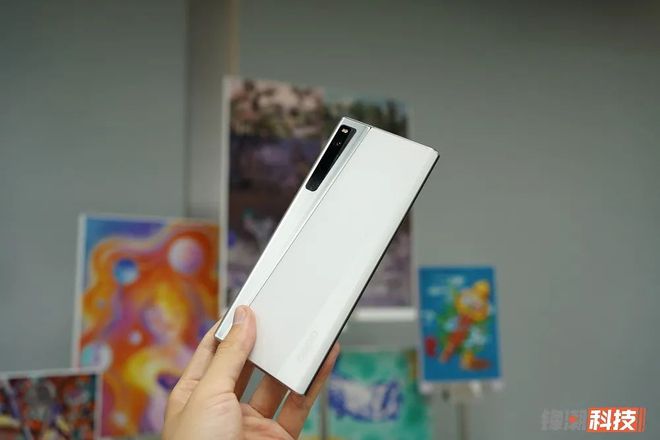 nload="this.removeAttribute('width'); this.removeAttribute('height'); this.removeAttribute('onload');" />
nload="this.removeAttribute('width'); this.removeAttribute('height'); this.removeAttribute('onload');" />
哪怕打开来看,它也做得很完整。
这方案落在别的厂商手里,估计早就拿出来卖了。
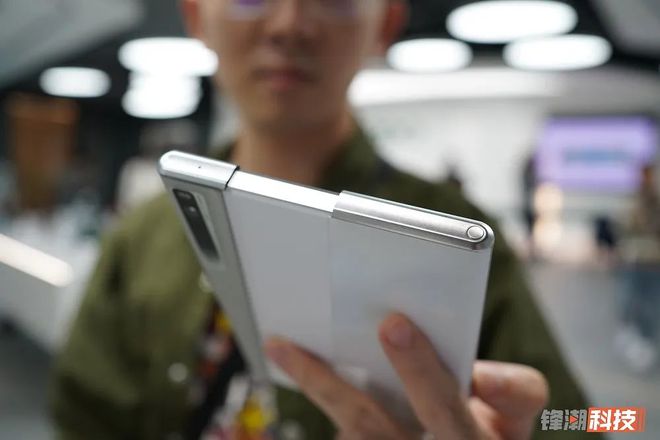 nload="this.removeAttribute('width'); this.removeAttribute('height'); this.removeAttribute('onload');" />
nload="this.removeAttribute('width'); this.removeAttribute('height'); this.removeAttribute('onload');" />
更让我觉得神奇的是,OPPO 这次连软件都有做一些基础的优化。
在系统设置页面状态下展开屏幕,设置页面会变成左右两侧分栏的模式。
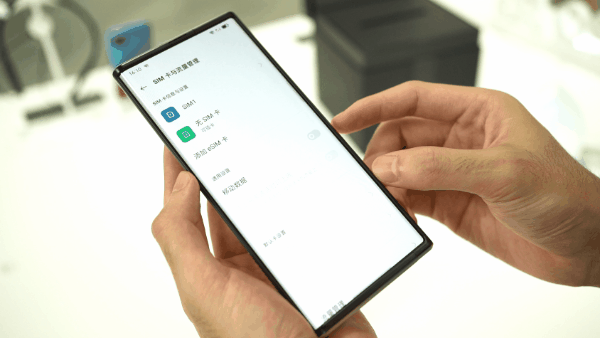
在各种 APP 的页面下展开屏幕,系统也会自适应变成平板模式。
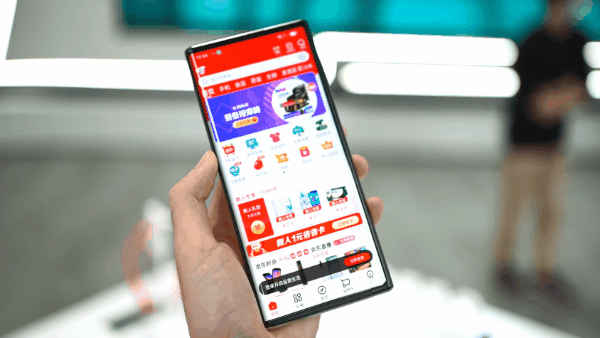
但这都不是最秀的,在 OPPO 的想法里,这种卷轴屏幕还有很大的应用场景。
比如打游戏的时候忽然接到电话/弹出通知内容,屏幕会伸展出一部分用来显示通知/电话;
如果你在看视频,手机还会根据视频的比例,自动调节到最合适的显示效果。
无论是 4:3、16:9 还是 21:9 比例,都不会有黑边出现。
另外还有小说的适配等。
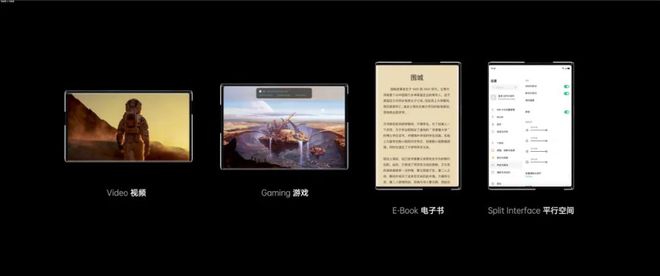 nload="this.removeAttribute('width'); this.removeAttribute('height'); this.removeAttribute('onload');" />
nload="this.removeAttribute('width'); this.removeAttribute('height'); this.removeAttribute('onload');" />
由于硬件方面的变化,OPPO 说你还可以把摄像头、天线、扬声器等元器件藏在伸缩的机身内。
比如通过机身伸展,给扬声器提供更大的音腔,增强播放效果;
比如通过机身伸展把天线拉长,增加天线的有效面积,增强信号接收效果。
等等等等……
比起折叠屏,这个形态能带来的优势似乎多了不少。
OPPO X1 2021 | Galaxy Z Fold2
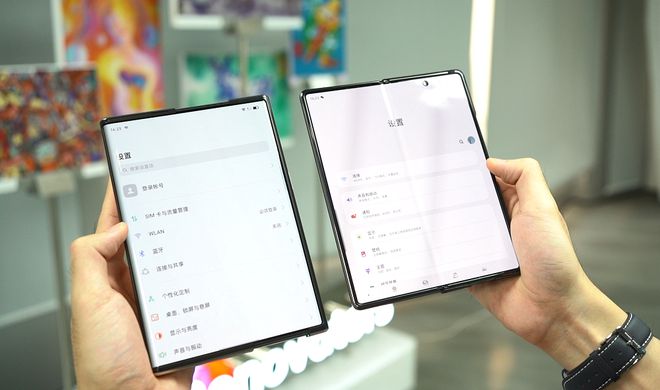 nload="this.removeAttribute('width'); this.removeAttribute('height'); this.removeAttribute('onload');" />
nload="this.removeAttribute('width'); this.removeAttribute('height'); this.removeAttribute('onload');" />
但是!
我说但是了。
OPPO 没有采用折叠设计,而是选择了伸缩卷轴,反而带来了更复杂的问题。
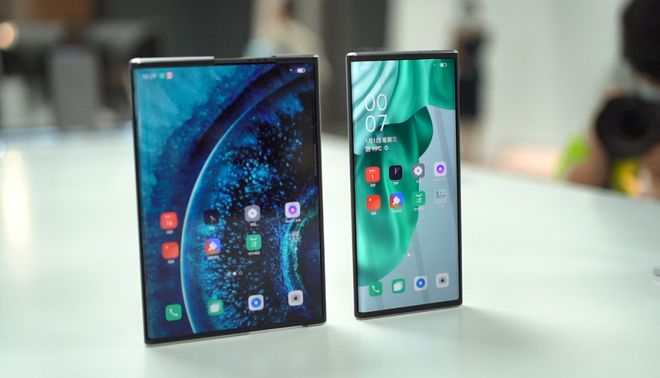 nload="this.removeAttribute('width'); this.removeAttribute('height'); this.removeAttribute('onload');" />
nload="this.removeAttribute('width'); this.removeAttribute('height'); this.removeAttribute('onload');" />
我就提几个点。
第一,你要保证收纳和伸展的安全。
和折叠一样,这种柔性屏幕往往比市面上所有产品都更脆弱,更经不起刮擦和磕碰。
卷轴要收纳到机身内部,又要频繁伸展,是一件很危险的事情。
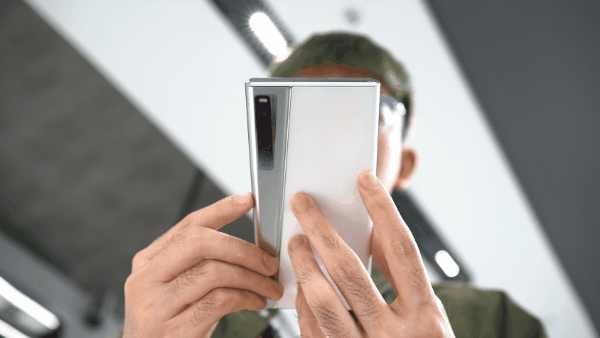
第二,你要保证日常使用的时候,这个拉伸出来的屏幕不能松松垮垮。
除了拉伸出来的屏幕之外,还要保证右边延伸出去的部分有足够的支撑。
当然还要尽可能去除折痕。
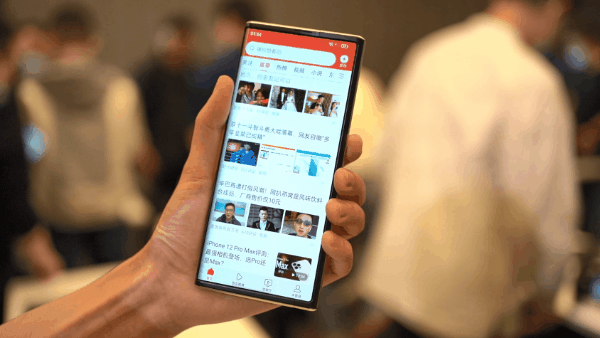
其实核心还是整个结构稳定性的问题。
OPPO 有没有解决这些问题?
那当然有。
 nload="this.removeAttribute('width'); this.removeAttribute('height'); this.removeAttribute('onload');" />
nload="this.removeAttribute('width'); this.removeAttribute('height'); this.removeAttribute('onload');" />
首先是屏幕的耐用性方面,OPPO X 2021 通过了超过 10 万次以上的伸缩测试。
保证屏幕不会因为伸缩而损坏。
这里就要说说 OPPO 专门为 OPPO X 2021 打造的几项技术。
为了防止屏幕突然拉伸或收缩导致元器件损坏,OPPO 选择了用电机替代手动拉伸。
双电机 Roll Motor 动力总成系统可以保证屏幕均匀地拉伸或收纳。
像下面展示的动图一样,只要上滑/下滑指纹识别区域,屏幕就会进行拉伸或收缩。
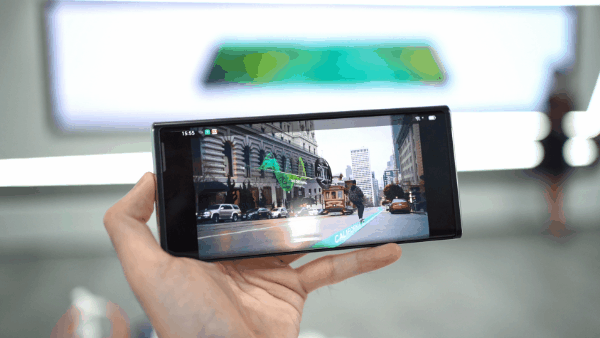
为了配合 Roll Motor 动力总成,OPPO 还做了一组 6.8mm 的滑轮轴承。
6.8mm 的尺寸,在有效控制机身尺寸的同时更接近 OLED 柔性屏受力后可弯曲直径,确保柔性屏在弯曲之后几乎不产生折痕。
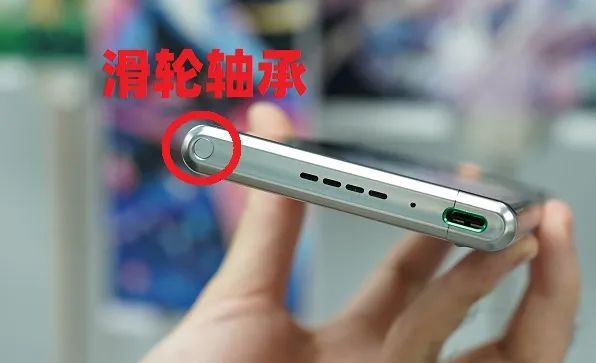 nload="this.removeAttribute('width'); this.removeAttribute('height'); this.removeAttribute('onload');" />
nload="this.removeAttribute('width'); this.removeAttribute('height'); this.removeAttribute('onload');" />
手机左侧的屏幕底部还采用了一套类似于坦克履带的「Warp Track 屏幕动态区骨架叠层」组件。
坦克履带知道吧?
就是这样的:
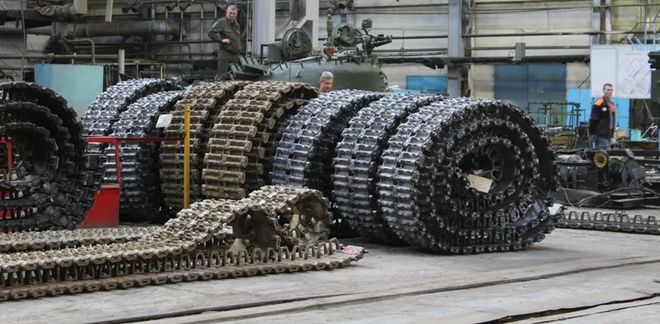 nload="this.removeAttribute('width'); this.removeAttribute('height'); this.removeAttribute('onload');" />
nload="this.removeAttribute('width'); this.removeAttribute('height'); this.removeAttribute('onload');" />
它可以对每一块区域的屏幕都提供有效支撑,同时收纳的时候保障一定的刚性。
做个手机而已,把坦克履带都用上了。
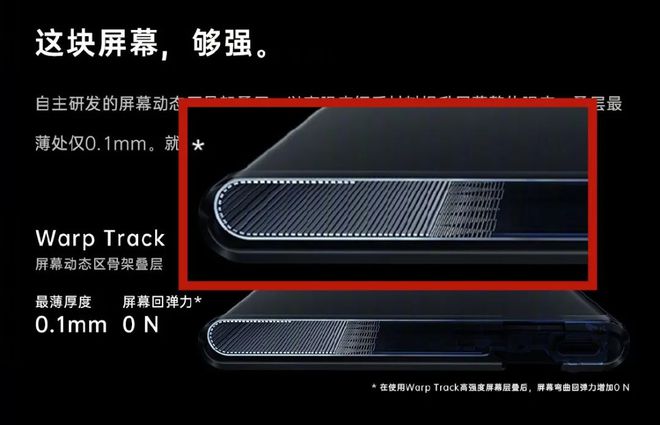 nload="this.removeAttribute('width'); this.removeAttribute('height'); this.removeAttribute('onload');" />
nload="this.removeAttribute('width'); this.removeAttribute('height'); this.removeAttribute('onload');" />
至于屏幕的刚性方面,OPPO 也做了一个很巧妙的设计。
大家看个图:
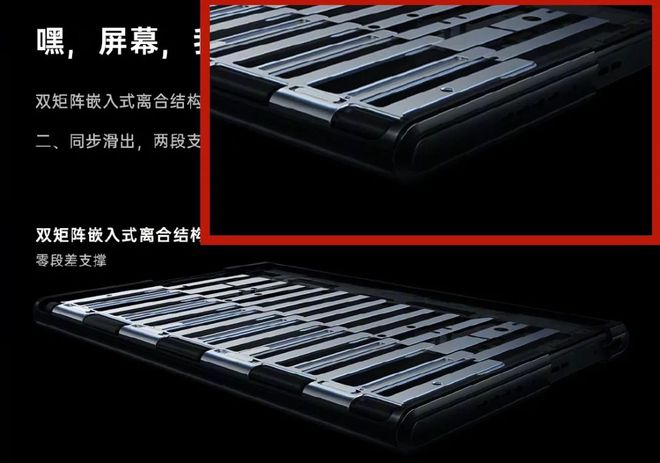 nload="this.removeAttribute('width'); this.removeAttribute('height'); this.removeAttribute('onload');" />
nload="this.removeAttribute('width'); this.removeAttribute('height'); this.removeAttribute('onload');" />
仔细看右上角的放大区域。
OPPO 把屏幕下方的支撑结构,换成了像两把梳子一样的双矩阵嵌入式离合结构。
在普通状态下,左右两个元件紧紧闭合。
当展开时,两个元器件拆分开,各自支撑自己的一半屏幕。
这样,两块屏幕在应对按压的时候都不会有松松垮垮的情况。
是真的,我冒着生命危险,用力地按过了,没问题。
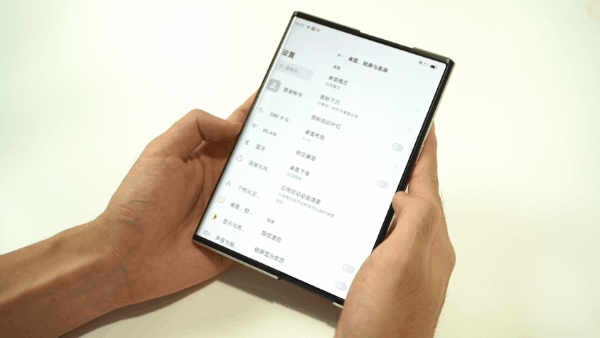
我真的觉得,这个机子要是大胆点都能拿出来卖了。
看完这么多。
肯定有人会问,这是哪家供应链的技术方案?
这一点,按照国际惯例,OPPO 没说。
不过,这次展出的概念机方案里,OPPO 有用到自己的不少技术。
其中整机专利 122 项,光是那个卷轴机构的专利,就达到了 12 项。
 nload="this.removeAttribute('width'); this.removeAttribute('height'); this.removeAttribute('onload');" />
nload="this.removeAttribute('width'); this.removeAttribute('height'); this.removeAttribute('onload');" />
所以,这次 OPPO 是拥有核心技术的呀!
可惜的是,OPPO 对这款产品的定位还是概念机,未来量产不量产还要看评估。
希望 OPPO 还是能努努力把它量产一下,现场体验完之后,我真的太想要这款手机了。
 nload="this.removeAttribute('width'); this.removeAttribute('height'); this.removeAttribute('onload');" />
nload="this.removeAttribute('width'); this.removeAttribute('height'); this.removeAttribute('onload');" />
